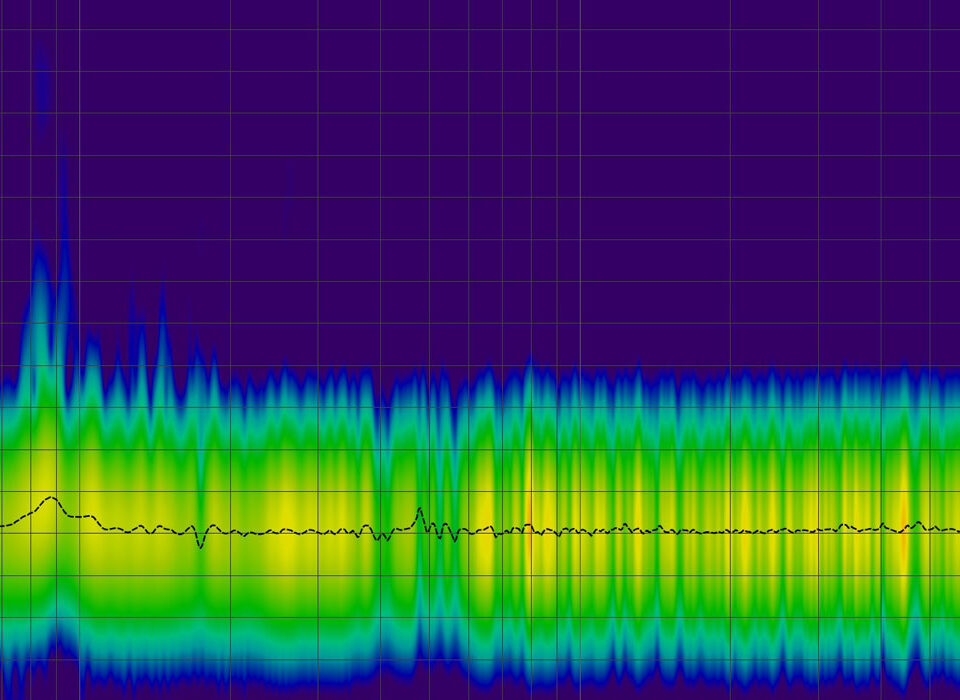Ten years ago I installed acoustic panels and bass traps to improve the acoustics of my small studio space. You can read more about that in the related posts linked to at the end of this article.
After finishing my EP “Almost Morning Now” I was thinking about how I could further improve the acoustics of my studio. I decided to install the active room correction system by miniDSP and Dirac Research after I had it demoed by a friend who was very enthusiastic about it.
How do room correction systems work?
Room correction systems generally work like this. The first thing that is done is measuring the acoustics of the room with a calibrated measurement microphone. This microphone is supplied with a calibration file containing the response curve of the microphone. This way, the measurement software can use it to compensate for when measuring the room response.
The resulting measurement data is then used to calculate correction filters to adjust the audio signal so it approaches an ideal response. A 100% perfect response is of course not possible in real life, especially in rooms which are not specifically designed to be used as an audio studio.
The calculated correction filters (digital algorithms) are loaded into a DSP (digital signal processor) which adjusts the audio signal fed into it in real time. The resulting output signal approaches the ideal acoustic response of a perfect room.
The correction filters can be implemented in software (as a plugin in your DAW for example) or in hardware.
miniDSP Dirac Live™ series
As I mix my music in stereo I decided to go with the miniDSP DDRC-24. I also bought the UMIK-1 calibrated USB measurement microphone.
The DDRC-24 is a stand-alone hardware unit which has 2 analogue inputs and 4 analogue outputs. It also has a Toslink digital input and USB connection which can also be used as digital audio input. I don’t need the two extra audio outputs but they will come in handy if I want to connect a sub woofer in the future.
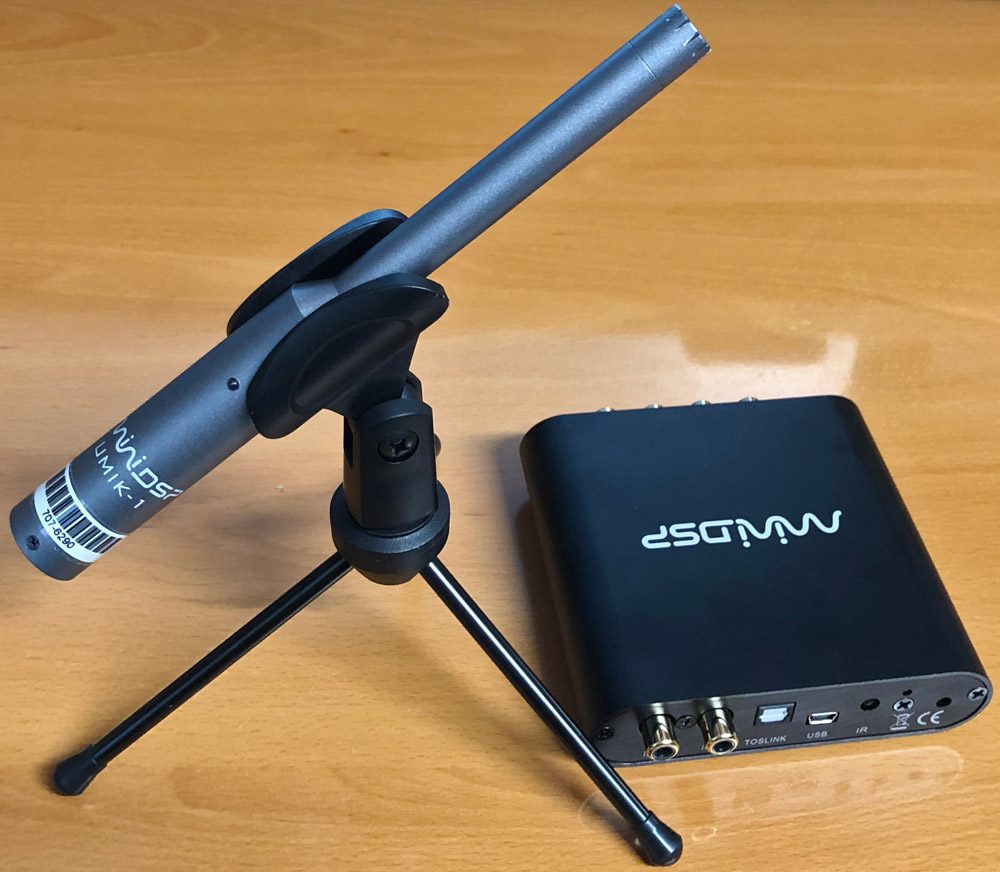
The miniDSP DDRC-24 supports Dirac Live, the room correction algorithm designed by Swedish company Dirac Research AB. It uses a powerful algorithm to analyze a set of nine measurements taken around the listening area and generates a correction filter from that. This correction is implemented using what Dirac Live calls mixed-phase filters which is a combination of so-called IIR and FIR filters. FIR filters are more powerful than IIR filters, but more expensive to implement as they use more processing power.
In practice this means that Dirac Live corrects both time domain and frequency domain problems in the measured room. Many other room correction solutions compensate for frequency domain issues only.
Before and after
After connecting the miniDSP DDRC-24 I installed the miniDSP en Dirac Live applications on my studio PC. Configuration was pretty straight forward and there is lots of information on the miniDSP website if needed.
Before being able to accurately measure the room I first had to calibrate the monitor speakers. This was done by adjusting the volume of each speaker (I use active monitors) while the software generates a white noise signal. The goal was to get the audio levels of both speakers as close as possible.
Next was executing the actual measurements of the room. I set up the microphone on a stand to do the first measurement. Then I used the stand as a reference point for the other measurements (29 in total) for which I held the microphone in my hand. When this was done I entered a flat target response curve in the Dirac Live application and the software calculated the resulting filters which I uploaded to the DDRC-24.
The result was fantastic. When I activated Dirac Live it was like a dull low frequency blanket was lifted. The resulting audio was clear, well defined (especially the low and high frequencies) and overall balanced. I am very happy with this improvement in sound quality!
Measuring the result
To check the room acoustics without and with Dirac Live activated I measured this using the excellent free Room EQ Wizard (REW) application. REW also supports the UMIK-1 measurement microphone so this made it very easy.
Keep in mind that the frequency response of my studio monitors (Event 20/20 bas v3) is specified as 35Hz-20kHz. This means that frequencies below 35-40Hz are not reproduced accurately by these speakers.
The diagram below plots the frequency response curve of my studio room. The red line represents the initial room response. The blue line represents the frequency response with Dirac Live activated. The fluctuation of the overall response stays within 4 dB over the complete frequency range with the exception of the 400-600Hz range. I am confident however that I can tweak that by experimenting with the target curve in Dirac Live.
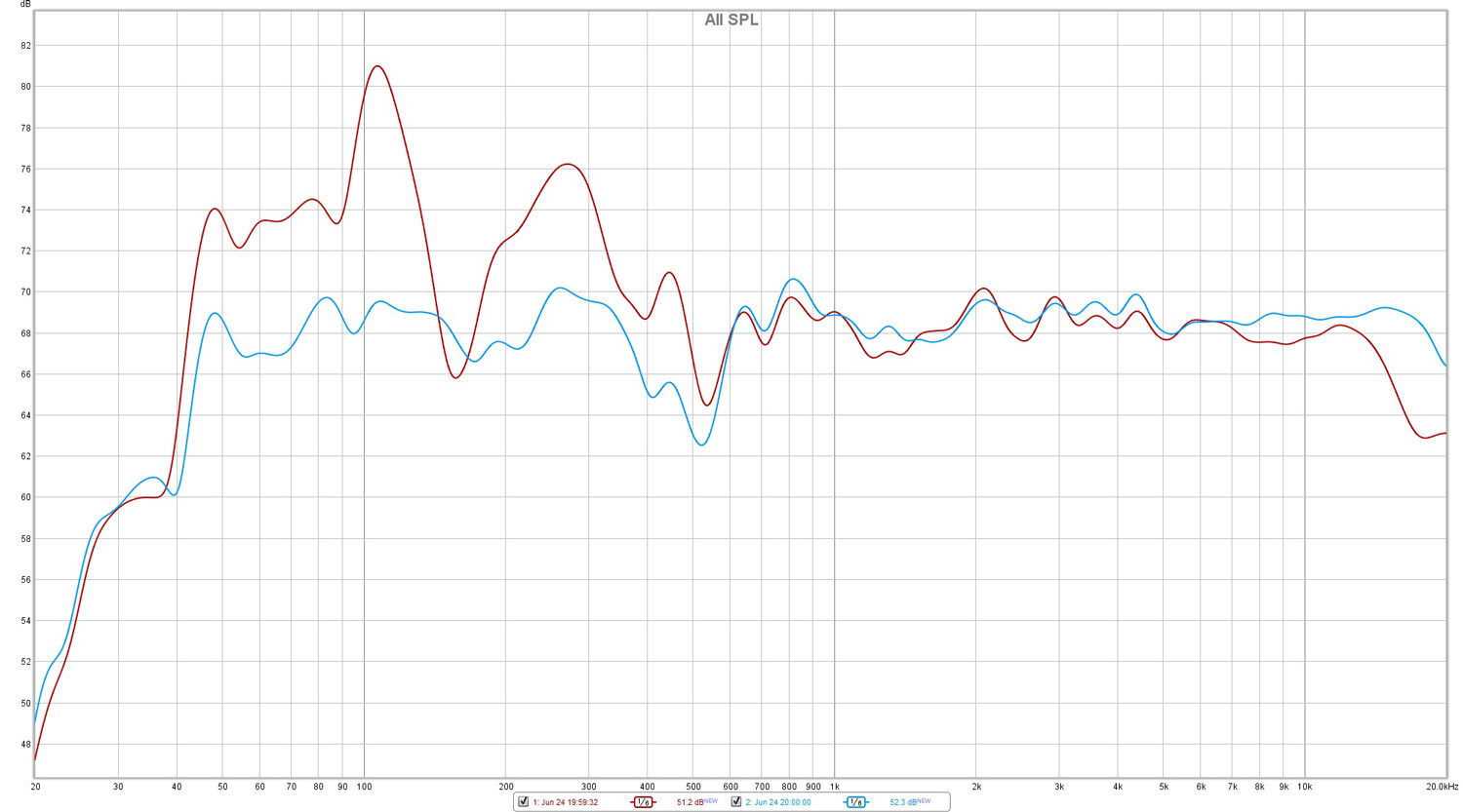
In the previous articles I used the RT60 measurements to show the frequency dependent reverberation time. This is very useful information but in a small room like mine this parameter has little meaning below frequencies of 200-300Hz.
The spectograms below show the decay time over the frequency range. With Dirac Live activated the peaks in amplitude in the lower frequencies are evened out and the decay times are reduced.
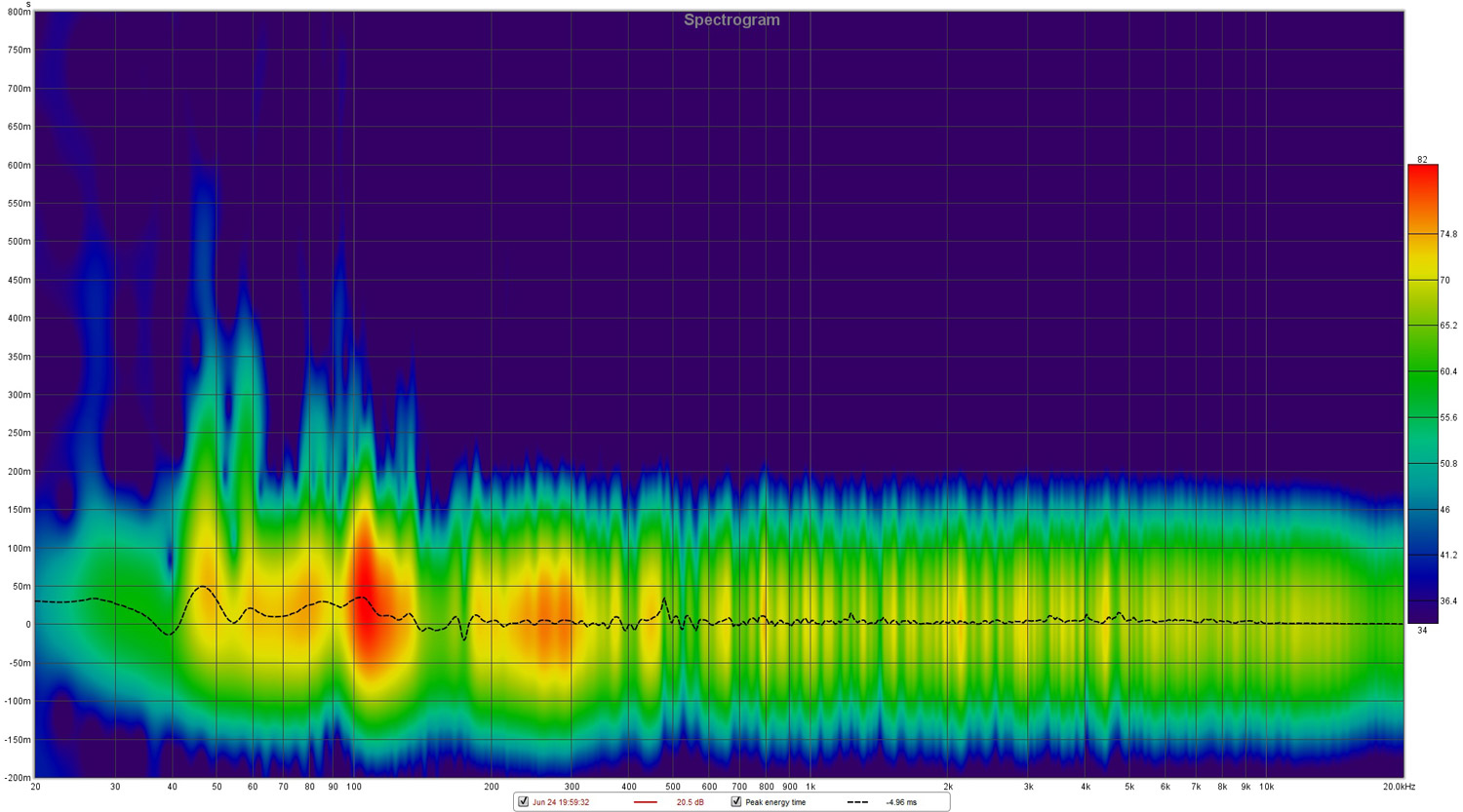
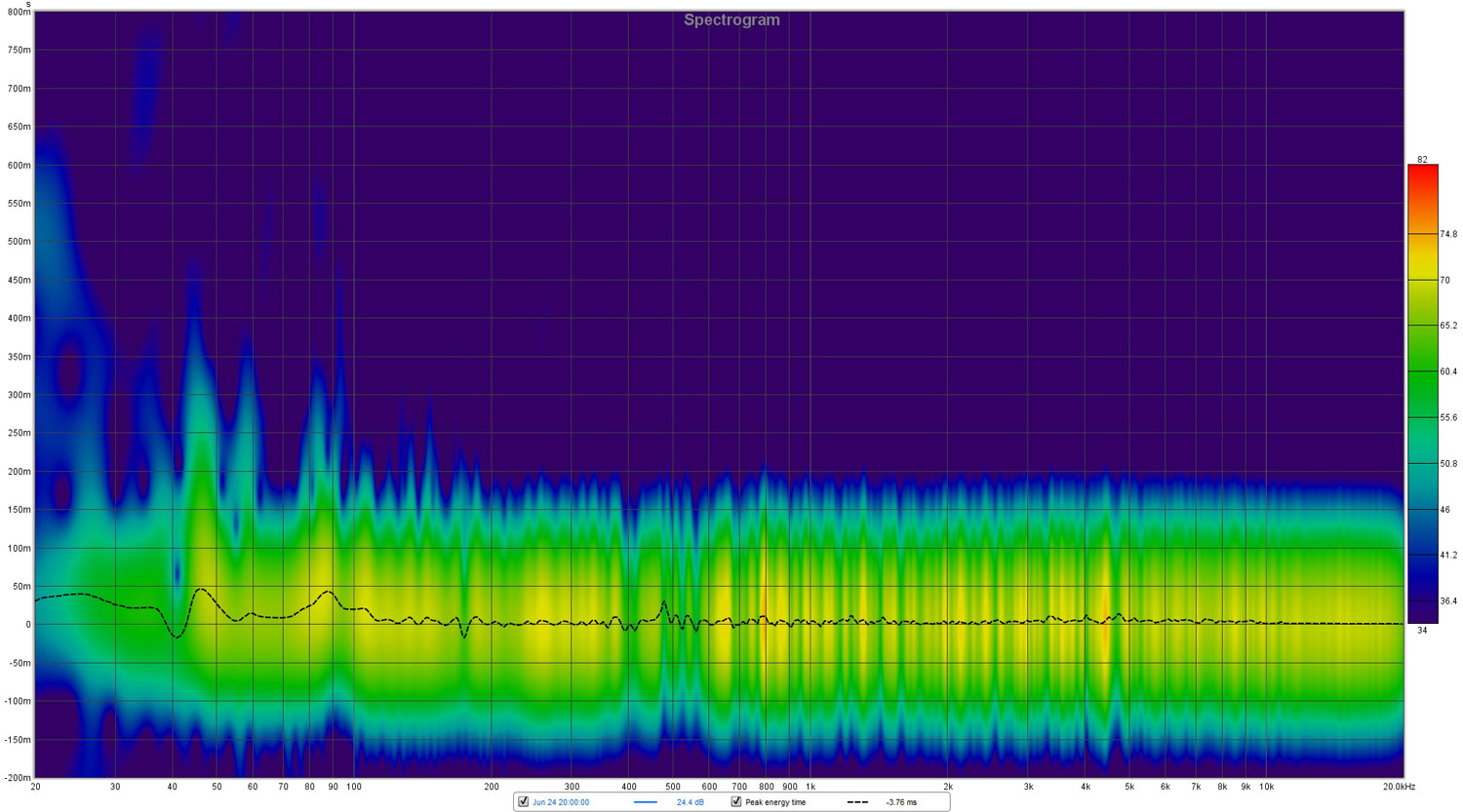
Conclusion
As can be seen in the measurement data Dirac Live delivers an excellent audio improvement in my studio room. The audio is balanced, well defined and has no more booming low frequencies. I am confident that I have a much better sound now to make accurate mixing decisions.
If you’re looking for a room correction system, the miniDSP DDRC-24 should be on your short list as far as I’m concerned.
However, do not expect a system like this to fix all your problems. I would advise to first look into installing some acoustic panels to optimise audio reflections in your room. That makes it easier for a room correction system to further enhance the audio quality in your room.
